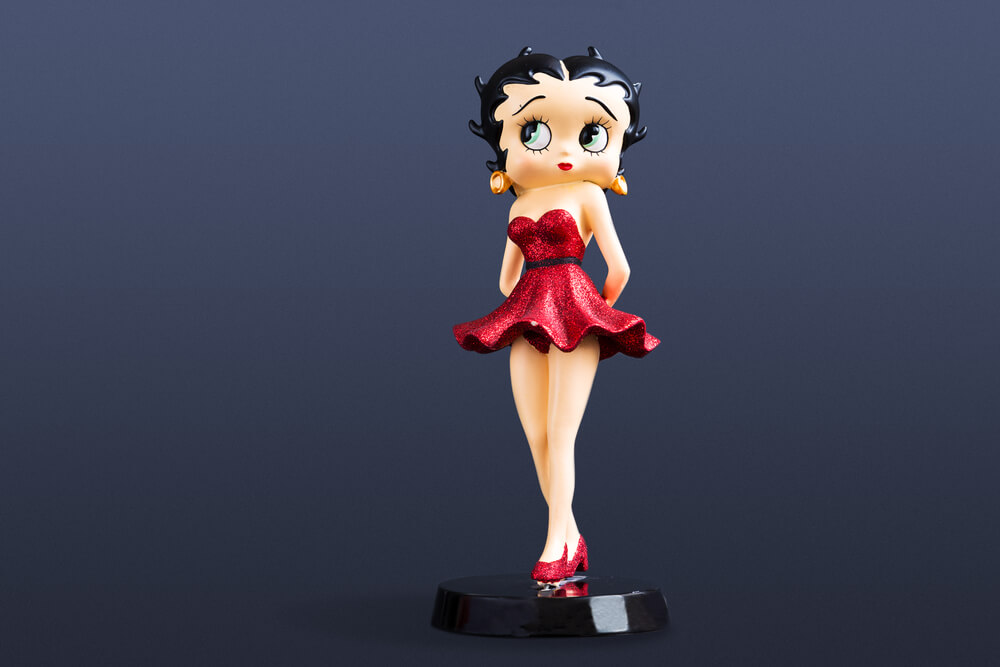Betty Boop made her debut on August 9, 1930, in “Dizzy Dishes” with her trademark heels, garter and long eyelashes. In this iconic Max Fleischer cartoon, waiter/chef/dog Bimbo scrambles to serve a roast duck to a gorilla in a nightclub. When he sees Betty singing “Boop-Oop-a-Doop” onstage, he falls in love, singing along as he strums the duck like a guitar.
The piggish primate eats his plate and table before spotting Bimbo and the bird and chasing them around the club. In the end, Bimbo gets away on a train made from kitchen utensils after stealing the gorilla’s pants.
While Betty Boop is only a side character in her first appearance, she would go on to become Fleischer Studio’s most popular property.
In “Dizzy Dishes,” Boop is an anthropomorphic poodle, though her character later developed into the iconic flapper audiences know today.
Inspired by Clara Bow, Esther Jones and Helen Kane, Betty’s dog ears became long earrings, and her fur turned into tight curls. She appears in over 100 cartoons from the 1930s, including the first Popeye cartoon in 1933.
In 1934, however, the Hollywood Production Code forced the studio to draw her in long dresses with a less sultry personality. Betty’s troubles continued as Clara Bow sued Fleischer Studios for copyright infringement.
Fortunately, none of this held Betty Boop back. Through constant syndication, guest appearances and merchandise deals, generations of cartoon enthusiasts worldwide still recognize her as the bubbly, spirited face of the Jazz Age.

